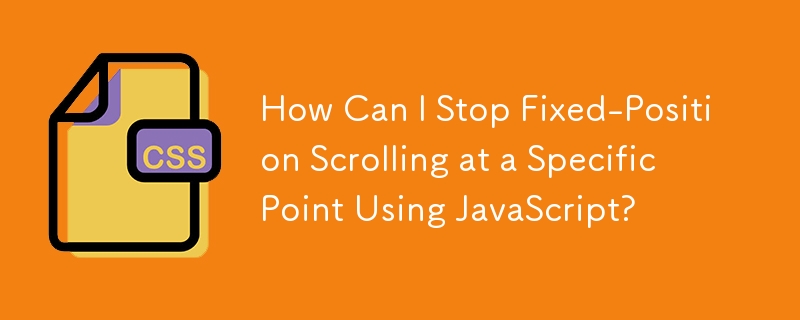Found a total of 10000 related content
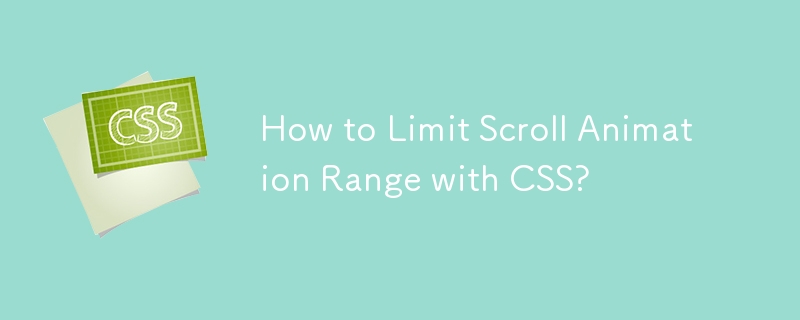
How to Limit Scroll Animation Range with CSS?
Article Introduction:Setting Bounds on the CSS Value for Window Scroll AnimationProblem StatementWhen implementing a dynamic scrolling effect, such as a map that moves...
2024-11-12
comment 0
816
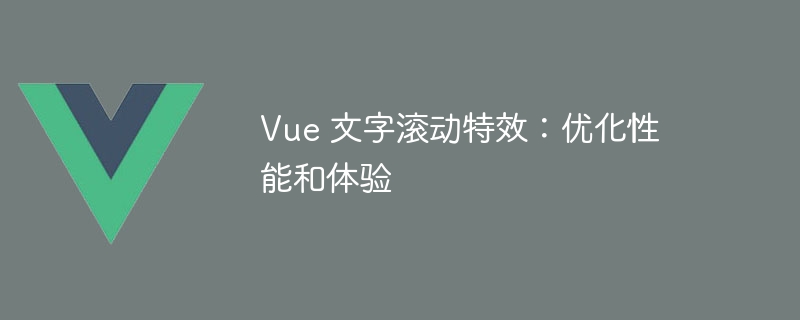
Vue text scrolling effects: Optimize performance and experience
Article Introduction:Use the v-window command to achieve text scrolling effect, optimize performance and improve user experience. The specific optimization steps include: 1. Use the v-window command to achieve virtual scrolling; 2. Improve scroll smoothness and response speed.
2025-04-07
comment 0
964
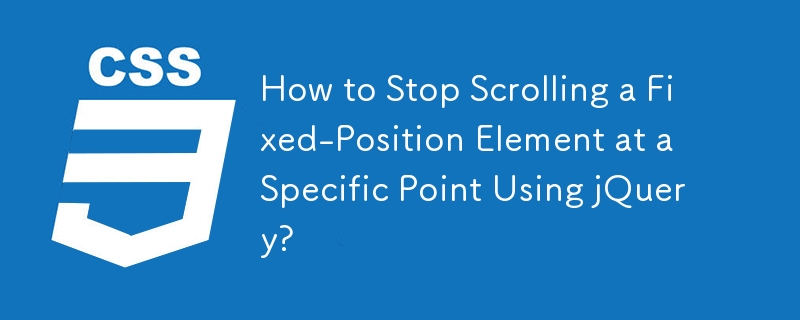
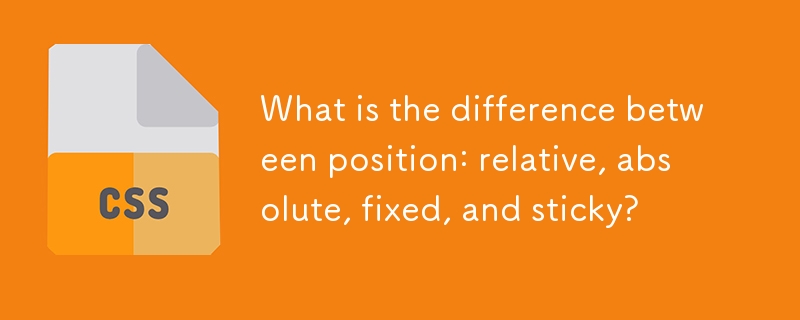
What is the difference between position: relative, absolute, fixed, and sticky?
Article Introduction:The position attribute has four values: relative, absolute, fixed, and sticky, and their behaviors are different. 1. Relative: The element is offset from its original position and is still in the document flow; 2. Absolute: Depart from the document flow, positioning relative to the nearest positioning ancestor elements; 3. Fixed: Depart from the document flow, always positioning relative to the viewport, keeping the position unchanged when scrolling the page; 4. Sticky: Between relative and fixed, according to the scroll position switching behavior, you need to specify top, bottom and other values ??to take effect, which are often used to fix the header or sidebar.
2025-06-30
comment 0
696
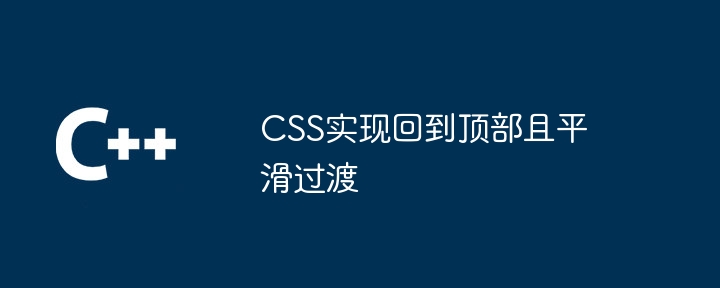
CSS implementation back to top and smooth transition
Article Introduction:Implementing a back to top button with a smooth transition effect in CSS requires the following steps: Add an element with id="back-to-top"; set the button to fixed positioning, add styles (including initial transparency of 0); set the transparency to 1 when the button is hovered, and add a smooth transition effect; add scroll detection for the button using JavaScript, display the button when scrolling more than 100 pixels, and scroll smoothly to the top when clicking the button.
2025-04-04
comment 0
516

Creating Hyperlinks for Navigation with the HTML a Tag
Article Introduction:Using HTML tags, you can use the href attribute to realize page jump, open new windows, positioning within pages and email and phone link functions. 1. Basic usage: Specify the target address through href, such as accessing a web page; 2. Open a new window: add target="_blank" and rel="noopener" attributes; 3. Jump within the page: combine id and # symbol to achieve anchor point positioning; 4. Email phone link: use mailto: or tel: protocol to trigger system applications.
2025-07-11
comment 0
241
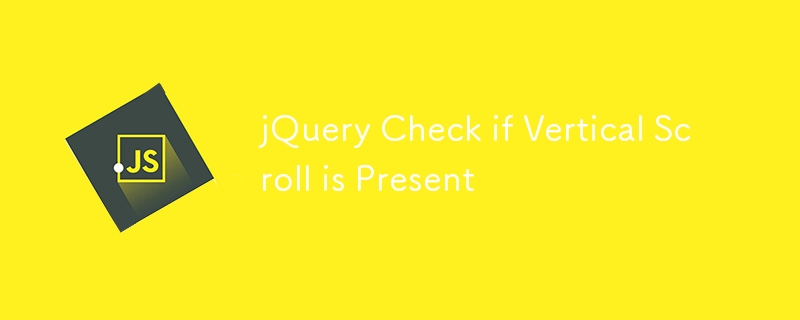
jQuery Check if Vertical Scroll is Present
Article Introduction:Use a simple jQuery code snippet to determine whether the main window vertical scroll bar exists. This feature is very useful, for example, when the user scrolls to the bottom of the page, an event that displays the relevant page can be triggered.
// Check whether the vertical scroll bar exists
// Also applicable to FF8
verticalScrollPresent: function() {
return (document.documentElement.scrollHeight !== document.documentElement.clientHeight);
}
// A lengthy version of the above method
verticalScrol
2025-03-01
comment 0
767
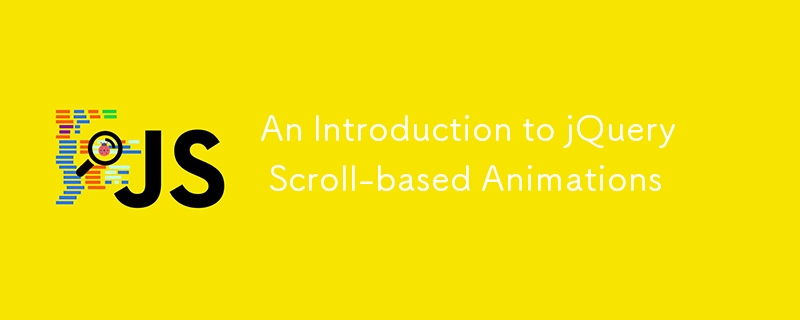
An Introduction to jQuery Scroll-based Animations
Article Introduction:Core points
Scroll-based animations and special effects are a technology that allows web developers to create dynamic interactive web experiences. They are triggered when the user scrolls down the page and can be manipulated and implemented with CSS and jQuery.
To create responsive scroll-based effects, you must define the width and height properties of the browser window. Without these properties, the effects will not work properly when the user resizes the window.
This tutorial provides four scroll-based animations and effects examples that demonstrate how they vary based on the value of the window width attribute. These examples include animation of opacity, height, width, left, right, and bottom properties of various elements.
This tutorial also contains a FAQ section that provides solutions to FAQ
2025-02-21
comment 0
1054

Creating Guided Scrolling Experiences with CSS Scroll Snap
Article Introduction:CSSScrollSnap improves the scrolling experience through adsorption effects. Common scenarios include horizontal scrolling navigation bar, vertical paginated scrolling and local adsorption in multi-column layouts. For horizontal scrolling, you need to set the container to flex layout and use scroll-snap-align:start; for vertical scrolling, you must unify the page height and combine scroll-snap-type:ymandatory; local adsorption is suitable for card lists, and scroll-snap-align:center is commonly used to achieve centered sliding. Notes include compatibility issues, incomplete support for some browsers, and conflicts with fixed positioning or transform. It is recommended to test different devices and browsers during development.
2025-07-05
comment 0
940
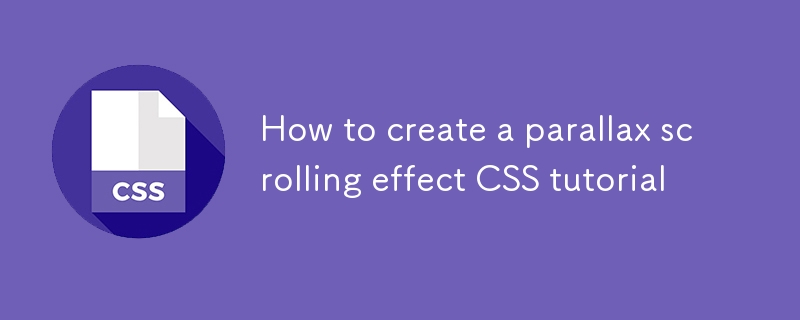
How to create a parallax scrolling effect CSS tutorial
Article Introduction:The key to making parallax scrolling effect is to allow elements of different layers to scroll at different speeds. 1. First, build a multi-layer HTML structure, including background, medium scene and foreground, and use CSS to set the container overflow:hidden and absolute positioning; 2. Then listen to scroll events through JavaScript, use transform:translateY() to dynamically adjust the positions of each layer. The background layer scrolls slowly and the medium scene is slightly faster; 3. Finally, optimize performance, use throttling functions to control the scrolling frequency, compress image resources and adapt to the mobile terminal, and consider pure CSS solutions to improve compatibility.
2025-07-04
comment 0
820

How to create a 'back to top' button with HTML and JavaScript?
Article Introduction:To add the "Back to Top" button, first create the button element in HTML and set the id, such as ↑ back to top; then set the fixed positioning, lower right corner position and hide the default display through CSS, and add styles such as background color, rounded corners and shadows; then listen to scroll events in JavaScript, and display the button when the scroll distance exceeds the set value (such as 300 pixels), otherwise hide it; finally bind the click event for the button, and use window.scrollTo({top:0, behavior:'smooth'}) to achieve a smooth return to the top effect.
2025-07-12
comment 0
236

What are the shortcut keys for LibOffice on Debian
Article Introduction:The shortcut keys for customizing LibOffice on Debian systems can be adjusted through system settings. Here are some commonly used steps and methods to set LibOffice shortcut keys: Basic steps to set LibOffice shortcut keys Open system settings: In the Debian system, click the menu in the upper left corner (usually a gear icon), and select "System Settings". Select a device: In the system settings window, select "Device". Select a keyboard: On the Device Settings page, select Keyboard. Find the command to the corresponding tool: In the keyboard settings page, scroll down to the bottom to see the "Shortcut Keys" option. Clicking it will bring a window to a pop-up. Find the corresponding LibOffice worker in the pop-up window
2025-05-16
comment 0
991

How to make a parallax scrolling effect with HTML5?
Article Introduction:To realize the parallax scrolling effect in HTML5, you need to combine HTML, CSS and JavaScript. The core is to allow different page elements to scroll at different speeds. 1. The HTML structure should contain multiple independent layers, such as using different class names to represent background, intermediate content and foreground. 2. CSS uses position:absolute and translateZ to create a 3D depth sense. The smaller the value of the background layer, the slower the scrolling. 3. JavaScript can listen to scroll events, dynamically adjust the translateY value, and control the scroll speed of each layer by multiplying by a coefficient. 4. Pay attention to performance optimization and use requestAnimationFrame
2025-07-15
comment 0
724
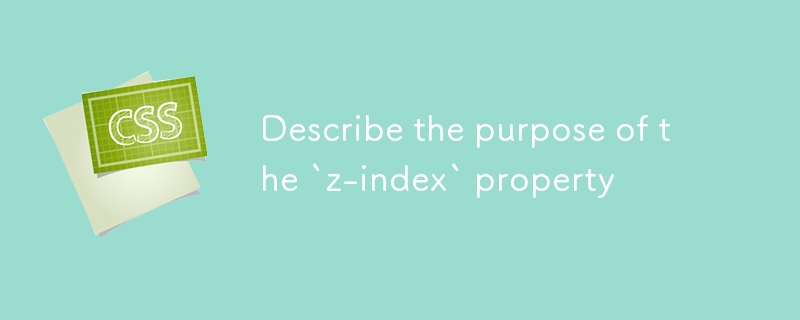
Describe the purpose of the `z-index` property
Article Introduction:The z-index attribute controls the display level of positioning elements (such as relative, absolute or fixed positioning) in the page by setting the stacking order of elements. The specific rules are as follows: 1. z-index only takes effect on elements that have non-static positioning; 2. The larger the value, the higher the level, but be careful to avoid the abuse of high numerical values to cause confusion; 3. The elements must be compared in the same stacking context to be effective. The z-index of the parent container will limit the maximum display level of the child elements; 4. Common problems include not setting the position attribute, the parent created an independent stacking context or third-party CSS coverage, which can be solved by checking and adjusting the value layer by layer through the browser developer tools.
2025-07-18
comment 0
442
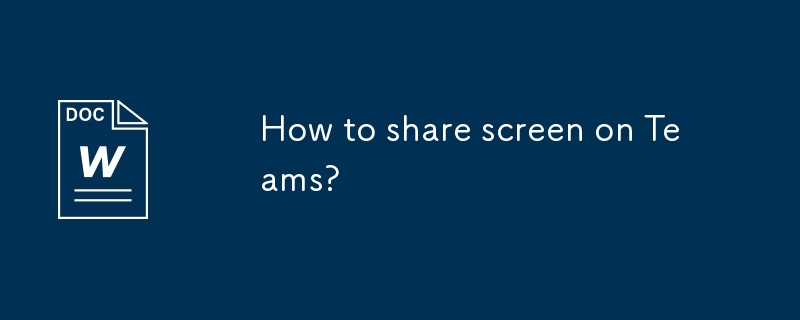
How to share screen on Teams?
Article Introduction:Share the screen in Microsoft Teams by clicking "Share Content" to select the screen, window or browser tag. The specific steps are: 1. Click "Share Content" in the meeting and select the sharing type; 2. It is recommended to test in advance for the first time and close irrelevant notifications; 3. Sharing a specific window can improve concentration and avoid misoperation; 4. Multi-monitor users need to pay attention to selecting the correct screen; 5. The mobile phone enters the sharing process through "more operations", paying attention to system differences and content restrictions; 6. PowerPoint can directly share the window or use "presentation mode", and cooperate with "presenter view" to control page turnover and notes. Mastering these details can improve the display effect and appear more professional.
2025-07-16
comment 0
226

How do I create links in HTML using the element?
Article Introduction:To create a link with tags in HTML, you must first make it clear that the href attribute is required. 1. The basic structure is link text, used to jump to the specified URL; 2. Add target="\_blank" to make the link open in a new window. It is recommended to add rel="noopener" to improve security; 3. Use relative paths (such as href="/about.html") to achieve page redirection in the site; 4. Define anchor points (such as href="#section1") through id to achieve in-page positioning; In addition, it is also necessary to note that the link text should be descriptive and regularly tested
2025-06-24
comment 0
622

What is the element, and what types of content does it contain?
Article Introduction:The div element is used in HTML to structure web content and group other elements as containers. It has no visual effect itself, but it can realize layout and design in combination with CSS or JavaScript. Common uses include dividing page areas, combining form elements, and building responsive grid systems. By adding a class or ID, you can control background, spacing, and positioning for it applying styles or scripts. However, divs should not be used excessively, and labels with clearer semantics such as headers, footers, etc. should be given priority to improve accessibility and SEO.
2025-06-25
comment 0
901

How to link to a specific part of a page in HTML?
Article Introduction:To achieve the function of jumping to a specific part in a web page, you can achieve it through the following steps: 1. Set a unique id for the target element; 2. Use the #id name to point to the id in the link's href attribute; 3. You can add scroll-behavior:smooth through CSS to achieve smooth scrolling effect; 4. Pay attention to ensuring that the id is unique and has a reasonable naming, avoiding Chinese or retaining keywords; 5. In mobile or single-page applications, you need to ensure that the target element has been loaded or used JavaScript to deal with offset issues.
2025-07-11
comment 0
498


